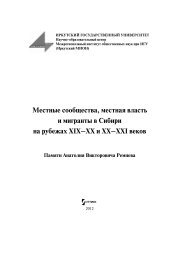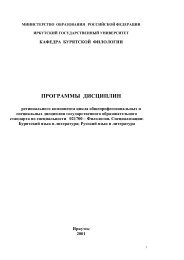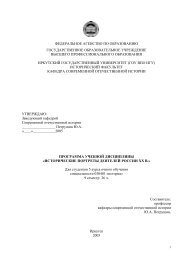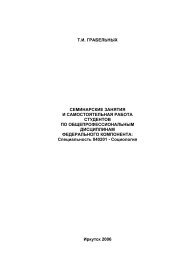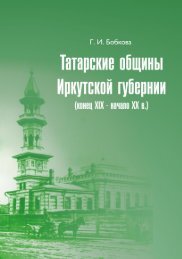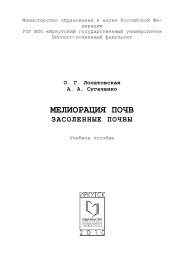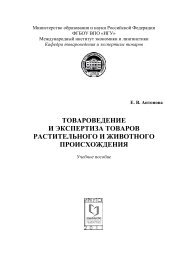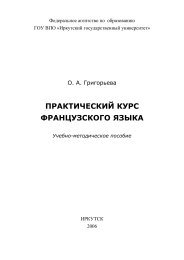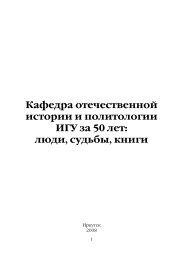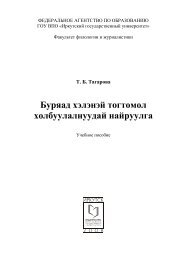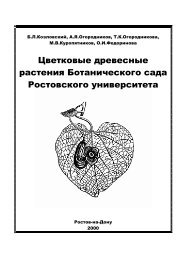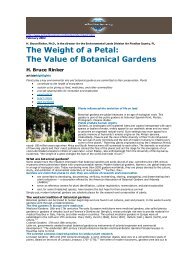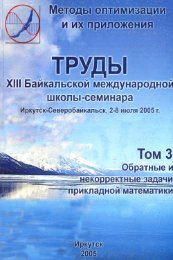Difference-differential Equations with Fredholm Operator in the Main ...
Difference-differential Equations with Fredholm Operator in the Main ...
Difference-differential Equations with Fredholm Operator in the Main ...
Create successful ePaper yourself
Turn your PDF publications into a flip-book with our unique Google optimized e-Paper software.
So it is proved<br />
Theorem 1. Suppose conditions 1 and 2 are satisfied, f : Ω ⊂ R r → E 2 - sufficiently<br />
smooth function. Then any solution of equation (1) can be represented <strong>in</strong> <strong>the</strong> form<br />
u = Γv + (C, Φ)<br />
where v satisfies regular equation (8), and <strong>the</strong> vector C(x) is def<strong>in</strong>ed from system (10).<br />
S<strong>in</strong>ce detA B = 0, <strong>the</strong>n system (10) is degenerated <strong>in</strong> <strong>the</strong> general case. Let us specify<br />
<strong>the</strong> sufficient conditions on which <strong>the</strong> systems (10) is recurrent sequence of regular l<strong>in</strong>ear<br />
difference- <strong>differential</strong> equations (solved accord<strong>in</strong>g to operator L 1 ).<br />
Introduce <strong>the</strong> follow<strong>in</strong>g condition:<br />
3 The operators A 2 , . . . , A q commute quasitriangularly (see Def.2), or k = n.<br />
Lemma 1. Suppose conditions 1, 2, 3 are satisfied. Then system (10) is a recurrent<br />
sequence of l<strong>in</strong>ear difference- <strong>differential</strong> equations of order q 1 <strong>with</strong> <strong>the</strong> operators of <strong>the</strong><br />
form<br />
˜ L ks = L 1 +<br />
q∑<br />
i=2<br />
a ik<br />
p k −s+1,sL i .<br />
In particular, if condition 1 is satisfied and A 2 = . . . = A q = 0, system (10) takes <strong>the</strong><br />
form<br />
L 1 C ipi (x) =< f(x), ψ (1)<br />
i >,<br />
L 1 C ipi −s(x) =< f(x), ψ (s+1)<br />
i > −L 0 C ipi −s+1(x), s = 1, p i − 1, i = 1, n.<br />
Proof follows from lemma 2 [6] or lemma [10].<br />
So if <strong>the</strong> conditions of <strong>the</strong>orem 1 and lemma 1 are satisfied <strong>the</strong>n equation (1) can be<br />
reduced to regular equation (8) and to sequence of regular l<strong>in</strong>ear difference-<strong>differential</strong><br />
equations (10) <strong>with</strong> order q 1 . Thus under <strong>the</strong> condition 3 system (10) be pseudos<strong>in</strong>gular<br />
system.<br />
Remark. Based on lemma 1 <strong>the</strong> vector components c i <strong>in</strong> <strong>the</strong> case p i ≥ 2 are determ<strong>in</strong>ed<br />
from <strong>the</strong> recurrent sequence of l<strong>in</strong>ear equations of order q 1 . If p i ∗ = . . . = p i ∗ +s = 1<br />
<strong>the</strong>n <strong>the</strong> correspond<strong>in</strong>g elements c i ∗(x), . . . , c i ∗ +s(x) are determ<strong>in</strong>ed from <strong>the</strong> regular system<br />
of s + 1 equations of order q 1 . In particular if p 1 = · · · = p n = 1, <strong>the</strong>n A B become<br />
zero.<br />
4 The Choice of Boundary Conditions<br />
In this section conditions 1,2,3 are satisfied. In <strong>the</strong> preced<strong>in</strong>g section for <strong>the</strong> def<strong>in</strong>ition of<br />
projections (I − P )u, P u <strong>the</strong> solution u of equation (1) we constructed equation (8) <strong>with</strong><br />
regular operator<br />
q∑<br />
˜L = L 0 + L i A i Γ,<br />
i=1<br />
and system (10), splitt<strong>in</strong>g <strong>in</strong>to recurrent sequence of l<strong>in</strong>ear equations <strong>with</strong> regular difference<strong>differential</strong><br />
operators<br />
q∑<br />
L˜<br />
ks = L 1 + a ik<br />
p k −s+1,s L i.<br />
i=2<br />
5



